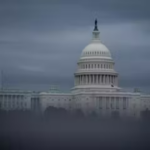By DAVID CRARY, AP National Writer
NEW YORK (AP) _ Individual Americans, rich or not, donated generously in response to many recent international disasters, including the 2010 earthquake in Haiti and last year’s Typhoon Haiyan in the Philippines. The response to the Ebola epidemic is far less robust, and experts are wondering why.
There have been some huge gifts from American billionaires _ $50 million from the Bill & Melinda Gates Foundation, $11.9 million from Microsoft co-founder Paul Allen’s foundation, and a $25 million gift this week from Facebook CEO Mark Zuckerberg and his wife, Priscilla Chan. Their beneficiaries included the Centers for Disease Control and Prevention, the World Health Organization and the U.S. Fund for UNICEF.
But the flow of smaller donations has been relatively modest.
The American Red Cross, for example, received a $2.8 million share of Allen’s donations. But Jana Sweeny, the charity’s director of international communications, said that’s been supplemented by only about $100,000 in gifts from other donors. By comparison, the Red Cross received more than $85 million in response to Typhoon Haiyan.
“After the typhoon, we got flooded with calls asking, `How do I give?”’ Sweeny said. “With this (Ebola), we’re not getting those kinds of requests.”
Why the difference? For starters, it’s been evident that national governments will need to shoulder the bulk of the financial burden in combatting Ebola, particularly as its ripple effects are increasingly felt beyond the epicenter in West Africa.
Regine A. Webster of the Center for Disaster Philanthropy, which advises nonprofits on disaster response strategies, said the epidemic blurred the lines in terms of the categories that guide some big donors.
“This is a confusing issue for the private donor community _ is it a disaster, or a health problem?” Webster said. “Institutions and individuals have been quite slow to respond.”
Officials at InterAction, an umbrella group for U.S. relief agencies active abroad, see other intangible factors at work, including the video and photographic images emerging from West Africa. Joel Charny, InterAction’s vice president for humanitarian policy, said it was clear from the imagery out of Haiti and the Philippines that donations could help rebuild shattered homes and schools, while the images of Ebola are more frightening and less conducive to envisioning a happy ending.
“People give when they see that there’s a plausible solution,” Charny said. “They can say, `If I give my $50 or $200, it’s going to translate in some tangible way into relieving suffering.’ … That makes them feel good.”
“With Ebola, there’s kind of a fear factor,” he said. “Even competent agencies are feeling somewhat overwhelmed, and the nature of the disease _ being so awful _ makes it hard for people to engage.”
Gary Shaye, senior director for emergency operations with Save The Children, suggested that donors were moved to help after recent typhoons, tsunamis and earthquakes because of huge death tolls reported in the first wave of news reports. The Ebola death toll, in contrast, has been rising alarmingly but gradually over several months.
___
Online:
U.S. Agency for International Development list of organizations responding to Ebola crisis: Non-Governmental Organizations Responding to Ebola
___
Follow David Crary on Twitter at http://twitter.com/CraryAP









